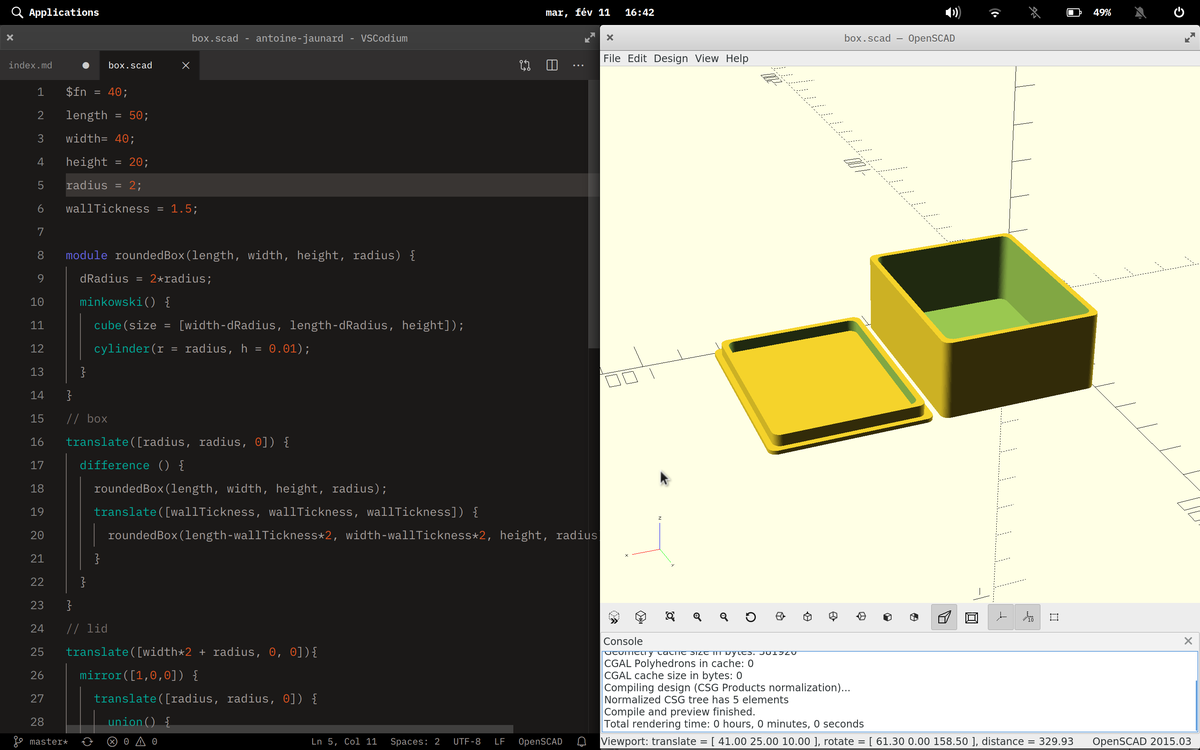


The projects are aimed in particular at those who want to design three-dimensional objects for their 3D printer or CNC milling machine. This book will help you to learn these basic principles quickly and easily by working through ten sample projects. Once you have internalized a few basic principles of this way of working, you can create even complex geometries without much difficulty. The necessary learning curve is much flatter than it appears at first glance. The unusual approach of describing geometry textually may initially give the impression that it is difficult and laborious to work in this way. These include, for example, the creation of artistic or photorealistic 3D graphics and animations. Of course, there are also use cases for which OpenSCAD is not suitable. creation and use of geometry libraries,.generation of geometries based on algorithms or mathematical descriptions,.fully parameterizable design of technical components,.This approach predestines OpenSCAD for a whole range of use cases that would be more difficult to implement in systems with a more interactive usage scheme. The special feature of OpenSCAD is that the geometry is specified via a purely textual description and not, for example, by using a pointing device in a graphical editor. The idea is to create complex geometries by combining a limited set of simple basic elements such as spheres, cylinders or boxes - a bit like how you used to play with building blocks as a child. OpenSCAD allows you to create three-dimensional models using Constructive Solid Geometry (CSG).


 0 kommentar(er)
0 kommentar(er)
